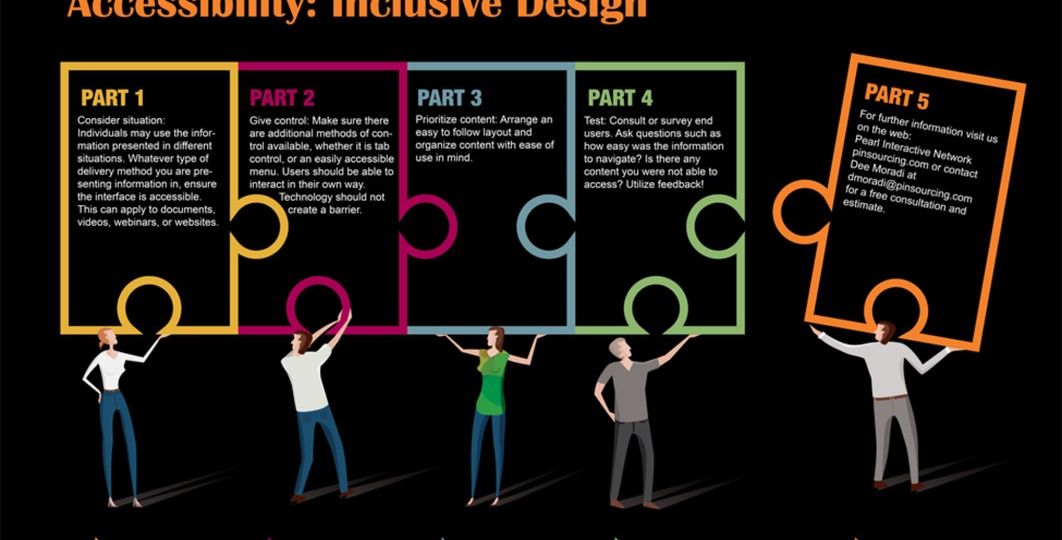
In today’s digitally connected world, accessibility is not a choice; it’s an imperative. Inclusive design is about creating products and experiences that can be used, understood, and enjoyed by as many people as possible, regardless of their abilities or disabilities. LeMeniz, a leading force in the software development realm, has taken a proactive stance in championing inclusive design. In this blog post, we’ll explore how LeMeniz is ensuring accessibility through their software solutions and why it’s so crucial in the modern era.
Understanding Inclusive Design:
Inclusive design, often referred to as universal design, is an approach to product and experience development that aims to accommodate the widest range of users. It’s not solely about making things accessible to people with disabilities; it’s about creating designs that are better for everyone. Inclusive design benefits not only individuals with disabilities but also those with temporary limitations, such as a broken arm, and even those who prefer an alternative way of interacting with technology.
LeMeniz’s Commitment to Inclusive Design:
- Accessible Websites and Applications:
- LeMeniz develops websites and applications that adhere to international web accessibility standards (WCAG). This ensures that individuals with disabilities can easily navigate and interact with digital content.
- User-Centric Design:
- LeMeniz prioritizes user research to understand the diverse needs of their audience, including individuals with disabilities. They design with empathy, considering various user scenarios and personas.
- Assistive Technologies Compatibility:
- LeMeniz’s software is engineered to work seamlessly with assistive technologies such as screen readers, voice recognition software, and alternative input devices.
- Text Alternatives and Captions:
- They emphasize the importance of providing text alternatives for non-text content like images and videos, making content more accessible to those who rely on screen readers. Additionally, they promote the use of captions for multimedia content.
- Simple and Consistent Navigation:
- LeMeniz designs user interfaces with straightforward and consistent navigation. This benefits users with cognitive or learning disabilities and also enhances the overall user experience.
- Compatibility with Multiple Devices:
- In an era where people access digital content through various devices, LeMeniz ensures that their software is responsive and compatible with different screen sizes and input methods.
- Testing and Feedback Loops:
- LeMeniz conducts regular accessibility testing and welcomes feedback from users, including those with disabilities. This iterative approach helps them identify and rectify accessibility issues.
Why Inclusive Design Matters:
- Legal Compliance: Many countries have established accessibility laws and guidelines, making it a legal requirement for businesses to provide accessible digital content and services.
- Expanded User Base: By making your software accessible, you broaden your user base to include individuals with disabilities, a significant and often underserved market.
- Improved User Experience: Inclusive design often leads to better usability for everyone. Simple, clear interfaces benefit all users, not just those with disabilities.
- Brand Reputation: Demonstrating a commitment to inclusivity enhances your brand’s reputation and demonstrates social responsibility.
- Future-Proofing: As our society ages, the need for accessible design will only increase. By embracing inclusive design now, you future-proof your software.
The LeMeniz Advantage:
LeMeniz’s approach to inclusive design stands out due to their:
- Expertise: They have a dedicated team with deep expertise in inclusive design and accessibility standards.
- Innovation: LeMeniz goes beyond compliance, exploring creative solutions to make digital experiences better for everyone.
- User-Centered Approach: They actively involve users with disabilities in the design and testing processes, ensuring their software meets real-world needs.
- Continuous Improvement: LeMeniz acknowledges that accessibility is an ongoing commitment and continues to enhance their software accordingly.
Conclusion:
Inclusive design isn’t just a moral or legal obligation; it’s a strategy for creating better products and experiences. LeMeniz’s proactive approach to inclusive design not only ensures accessibility for all but also reflects a commitment to building a more inclusive and equitable digital world. Their software solutions are more than just functional; they’re empathetic, user-centric, and welcoming to every individual, regardless of their abilities.
















